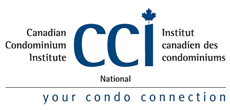Part 33 published on 01/02/11
The tree has grown too tall
Strata Plan VR-151 is a 4-storey, 40-unit strata property. The ground floor apartment includes a patio area. The upper boundary of the patio area is the extended height of the ceiling of the unit. Above this boundary is common property. A cedar tree, on the patio of the ground floor unit, had grown to the full height of the building. The strata counsel ultimately passed a by-law requiring trees to be pruned to the boundaries of an owner’s strata lot. In other words, trees were not to extend beyond the boundaries of the unit. Pruning this particular tree to this level (approximately one quarter of its present height) would likely result in the tree dying. The owner of the unit (the owner of the tree) applied for a declaration that the strata corporation’s actions, including the passing of the by-law, were significantly unfair, within the meaning of Section 164 of the Strata Property Act. The Court disagreed. The Court found that there was no significant unfairness, and that the by-law had been validly enacted and could be applied to the tree at issue.
However, the Court added that the enforcement of the by-law might involve significant unfairness. In that regard, the Court said:
Having said that, any specific steps the strata corporation may take to enforce its by-law will still be subject to review under s. 164. In that regard, I note again that this tree was permitted to grow far beyond the boundaries of the petitioner’s strata lot long before the present by-law was enacted and, indeed, long before the petitioner acquired her unit. Trimming such a large tree to the extent now required by the bylaw, or removing it entirely, is likely to be an expensive undertaking. It may be significantly unfair for the strata corporation to impose that cost, or the cost of suitable replacement planting, entirely on the petitioner. In the absence of evidence of the specific costs and options involved, I express no conclusion on that point, but mention it for the guidance of the parties in their future dealings.
[Editorial Note: The Court seems to be saying, in the above paragraph, that although the tree must be trimmed back to the boundaries of the strata lot (or removed), the strata corporation should perhaps cover the cost.]
